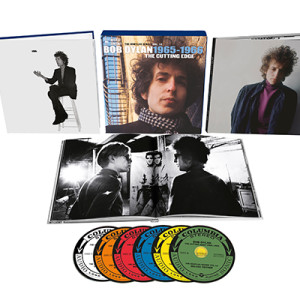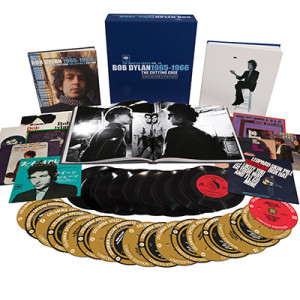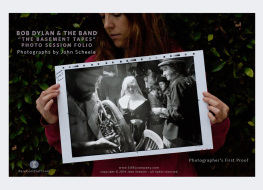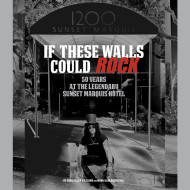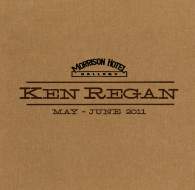Bob Dylan – The Cutting Edge 1965-1966: The Bootleg Series Vol. 12
“The Cutting Edge 1965-1966: The Bootleg Series Vol. 12”
Release date:
November 6, 2015
The latter two include “Mixing Up the Medicine,” a book of photos by renowned photographers who caught Dylan in action during this epic period in his creative career. Rare Cool Stuff Unltd. proudly produced the book. See below for profiles of the shooters.
Read the press release for “The Cutting Edge” at bobdylan.com.
Order “The Cutting Edge” from cuttingedge.bobdylan.com now.
INTRODUCTION to “MIXING UP THE MEDICINE”
by Ben Rollins
The music on The Cutting Edge is drawn from a time when Bob Dylan’s fame would reach international proportions. In just a few short years, a cult phenomenon, a concert favorite and a treasured recording artist had become a worldwide best seller with multiple radio hits. The visual impact of that international fame is chronicled in this special edition.
Many of the world’s greatest photographers lent their talents to capturing Dylan both on and off stage. At the same time, every magazine that covered music, every newspaper that cataloged popular culture and every collector’s newsletter had something to say and something to reveal about Bob Dylan.
We are fortunate to include not only the works of great photographers, but a wealth of archival research that illuminates those years. Although there is not enough space to go into detail about every photographer, we’d like to tell you a bit about the artists whose work represents the bulk of the images in this collection.

Barry Feinstein
Starting out as a photographer for Columbia Pictures in the 1950s, he quickly became known for his Hollywood photographs of celebrities and political figures. At the same time, he followed his passion for music, capturing many of rock’s greatest artists on camera. His work can be seen in more than 500 albums, including the cover photos for Janis Joplin’s “Pearl,” George Harrison’s “All Things Must Pass” and Bob Dylan’s “The Times They Are A-Changin.’” When Dylan toured Europe in 1966, Barry was there as the official photographer. Those photos, long considered lost, first came to light in 1998 and were included in the Live ‘66 Bootleg Series. In 2008, Barry published “Hollywood Foto-Rhetoric: The Lost Manuscript,” a collection of his Hollywood photos with text written by Bob Dylan in 1963.

Jerry Schatzberg
Born in The Bronx, New York in 1927, Jerry Schatzberg found his first success as a portrait and fashion photographer in the 1950s. His work, published in Vogue, Esquire, Glamor and Life, runs the gamut from Fidel Castro to Robert Rauschenberg, from Mary Tyler-Moore to Jimi Hendrix. Starting in the early ‘70s, Schatzberg began directing edgy, gritty films that had a particular New York sensibility, including “Panic in Needle Park,” “Scarecrow,” “The Seduction of Joe Tynan” and “Street Smart,” featuring Morgan Freeman in his breakout performance. It’s Schatzberg’s photograph on the cover of “Blonde on Blonde”; an outtake from that session graces the cover of “The Cutting Edge.”

Don Hunstein
Inspired by the work of legendary photojournalist Henri Cartier-Bresson, Hunstein began taking photographs while stationed in Europe in the mid-1950s. After returning to America, he began working for Columbia Records as a staff photographer in the early ‘60s, a position he would hold for more than 30 years. In the process, he would take hundreds of legendary photographs, many of which would become album covers for artists as diverse as Thelonious Monk, Glenn Gould, Leonard Bernstein and Tony Bennett. He’s probably best known by Dylan fans as the photographer who captured the young musician walking down Jones Street in New York’s Greenwich Village; memorialized on the cover of “The Freewheelin’ Bob Dylan.” It was also his photograph of New York City’s Times Square circa 1960 that became the cover of Bob Dylan’s memoir, “Chronicles, Volume 1.” And yes, that’s his photograph on the cover of the very first edition of Bootleg Series (Vol. 1-3).

Eugene Smith
We are thrilled to be able to include several images by one of America’s premiere photojournalists. Eugene Smith started out as a newspaper photographer, but soon gained renown working for Life Magazine, photographing World War II from the front lines. Several of his photographic series became legendary, including his photo essay on the work of Albert Schweitzer, and his immersion in the jazz loft scene in New York City in the mid-1950s. He only spent one day in the studio with Bob Dylan, but that happened to be the day “Like a Rolling Stone” was recorded; the resulting pictures included here, many for the first time, reveal a lush intensity.

Daniel Kramer
Born in Brooklyn, Daniel Kramer is a New York-based photographer and filmmaker. In 1964, Daniel was riveted by Bob Dylan’s performance on “The Steve Allen Show.” He was determined that the young musician would be his next subject. After months of cold- calling Dylan’s manager, Kramer triumphed. He would capture Dylan many times over the next year and a half. Those are his photos on the covers of “Bringing it All Back Home” and “Highway 61 Revisited.” Kramer’s photos have been published extensively in magazines and books and have been exhibited in galleries throughout the world. His subjects include artists, writers, musicians, athletes and political figures.

Jan Persson
Persson began working as a freelance photographer in his native Denmark in 1962. Originally chronicling the jazz scene in his hometown of Copenhagen, he also became interested in the rock ‘n’ roll artists who traveled there in the mid-‘60s. When Dylan’s controversial European tour of 1966 hit Denmark, Persson was granted unusual access. His brief time with Dylan yielded many famous photographs, including Dylan at Hamlet’s castle and some great hotel room shots with Richard Manuel spinning platters on a portable turntable. Persson’s work can be seen in many international magazines including Melody Maker, Down Beat and Jazz Special. He has had many international exhibitions and currently 15,000 of his photographs are preserved at the Aalborg University in Denmark.

Nat Finklestein
Nat Finklestein made a career out of chronicling subcultures and underground movements. A true outsider and a political radical, Finklestein was continually drawn to photographing the edges of society, which led him to Andy Warhol’s Factory where he became the “court photographer.” He was there with his camera when Dylan dropped by The Factory in early ‘66 to participate in one of Warhol’s now famous “screen tests.” Warhol shot more than 500 portraits of visitors to his workshop on 16mm film. There was no sound or action, just a subject and a film camera. At the end of the screen test, Warhol gave Dylan an Elvis silkscreen. Bob’s road manager strapped the painting to the top of his station wagon and Finklestein snapped a few last pictures as Dylan’s car drove down the New York streets.

David Gahr
David moved from Wisconsin to New York City after a stint in the army during WWII. Dropping out of graduate school at Columbia University, he found work as a stock boy in Sam Goody’s record shop on West 49th Street. While at the record store he indulged in his favorite hobby, photography, taking snapshots of the musicians and celebrities that populated the jazz clubs in midtown Manhattan. He became a professional photographer in 1958 when Moses Asch, the owner of Folkways Records, asked him to take portraits of the label’s roster. Hundreds of covers followed. Gahr became a camera’s eyewitness to the folk music movement, evidenced by his remarkable portraits of Woody Guthrie, Muddy Waters, Cisco Houston, Odetta and many, many more. It was at the Newport Folk Festival where Gahr first met and photographed Dylan in 1963. They wouldn’t do a formal session until 2001, when Dylan was photographed at Gahr’s Brooklyn brownstone – the resulting pictures would appear in 2001’s “Love and Theft” album.

Jean-Pierre Leloir
Born in Paris in 1931, Leloir, passionate about music, began taking photographs of musicians while he was still a teenager. His work, included in publications like Jazz Magazine and L’Express, became famous throughout France for his riveting portraiture of jazz greats like John Coltrane, Miles Davis, Duke Ellington, Billie Holiday and Charles Mingus. At the same time, he also began photographing the French Chanson movement, taking studio and concert photos of the likes of Edith Piaf, Johnny Hallyday and Yves Montand. When rock ‘n’ roll swept Europe in the ‘60s, Leloir was there, creating classic photographs of artists including Jimi Hendrix, John lee Hooker and Aretha Franklin.
We would be remiss if we did not put the spotlight on our international team of archivists. Although Sony Music and Columbia Records keep an extensive library, it pales in comparison with the depth and diversity of the treasures found, rescued, saved and protected by the following collectors and fans who have generously shared their riches with us. A tip of the leopard-skin pill-box hat to Arie de Reuss, Oddbjørn Saltnes, H.P. Bushoff, Mitch Blank, Magne Karlstad, David Eckstrom and Pete Howard.



